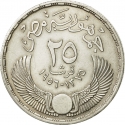You are about to finish your registration. Please check your mailbox (including spam folder). There should be a letter with a confirmation link. Check setting to make sure that your e-mail address is correct.
Send letter againDescription
The Suez Crisis begins when Egyptian President Gamal Abdel Nasser nationalizes the British and French-owned Suez Canal.
The Suez Canal, which connects the Mediterranean and Red Seas across Egypt, was completed by French engineers in 1869. For the next 87 years, it remained largely under British and French control, and Europe depended on it as an inexpensive shipping route for oil from the Middle East.
After World War II, Egypt pressed for evacuation of British troops from the Suez Canal Zone, and in July 1956 President Nasser nationalized the canal, hoping to charge tolls that would pay for the construction of a massive dam on the Nile River. In response, Israel invaded in late October, and British and French troops landed in early November, occupying the canal zone. Under Soviet, U.S., and U.N. pressure, Britain and France withdrew in December, and Israeli forces departed in March 1957. That month, Egypt took control of the canal and reopened it to commercial shipping.
The commemorative coin for the Nationalization of the Suez Canal bearing the portrait of Nasser was rejected. The coin having his portrait on it would send the wrong message, as it was not him who nationalized the Suez Canal but rather Egypt and its people.
Obverse

|
Depicts a portrait of Nasser (right), the inscription "Commemoration of the nationalization of the Sues Canal Company" and the date "July 26" above and "Gamal Abdel Nasser, President of the Republic of Egypt" below. تذكار تاميم شركة قناة السويس - ٢٦ يوليه |
|---|---|
Reverse

|
Depicts the headquarters of the Suez Canal Company building in Port Said with the flag of the Kingdom of Egypt (1922–1953) and the co-official flag of the Republic of Egypt (1953–1958) above. The inscription "Nationalization of the Sues Canal Company" with the date "July 26" above. The value (Arabic numeral 25) in the centre, the denomination "Qirsh" below dividing the dates (Hegira and Gregorian). تاميم شركة قناة السويس - ٢٦ يوليه |
| Edge |
25 Qirsh
(Piastres)
Special Strike
KM#
Related coins
Nationalization of the Suez Canal



